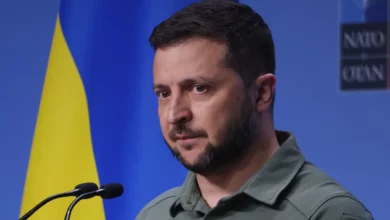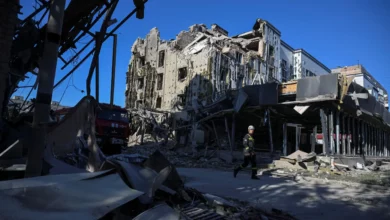
On the morning of July 29, just hours after more than 50 Ukrainian prisoners of war were killed at a detention center in the Donetsk region, a Russian reporter at the scene displayed remnants of a US-made HIMARS rocket.
It was the beginning of a full-court Russian media offensive, with a message as cynical as it was brutal. Ukraine, according to Moscow’s version of events, had killed its own soldiers with a HIMARS strike because it didn’t want them confessing to war crimes, and to discourage others from surrendering.
A senior official of the self-declared Russian-backed Donetsk People’s Republic (DPR), Eduard Basurin, claimed that “after the Ukrainian prisoners of war began to talk about the crimes they committed on the orders of the political authorities of Ukraine, a blow was struck here.”
Ukraine vehemently denied the claims, with President Volodymyr Zelensky calling the attack “a deliberate war crime by the Russians.”
Many of the prisoners in the Olenivka detention center belonged to the nationalist Azov Regiment. They had been transferred there after surrendering at the Azovstal steel plant in Mariupol in May. Azov is viscerally loathed by the Russians, and the feeling is mutual.
But would Ukraine target its own soldiers — many regarded as heroes for their resistance at Azovstal — even as they slept?
A CNN investigation based on analysis of video and photographs from the scene, satellite imagery from before and after the attack and the work of forensic and weapons experts concludes the Russian version of events is very likely a fabrication. There is almost no chance that a HIMARS rocket caused the damage to the warehouse where the prisoners were being held.
Experts consulted by CNN discount a HIMARS strike on Olenivka — but can’t say definitively what killed and wounded so many prisoners. A lack of access makes definitive conclusions impossible. However, experts say most signs point to an intense fire, and according to several witnesses there was no sound of an incoming rocket.




